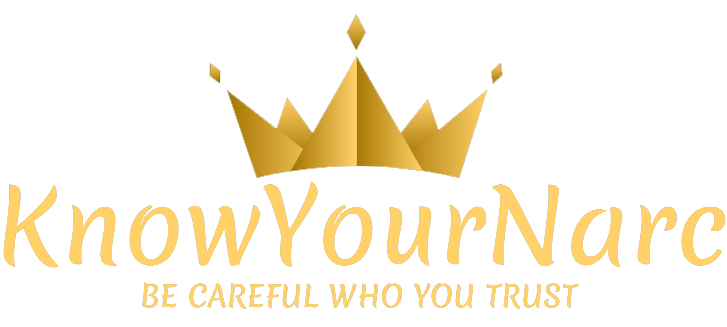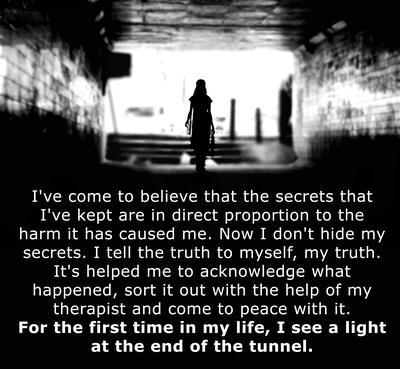Growing up with a narcissist is like living in a house of mirrors—distorted reflections of reality, confusing emotions, and a relentless search for validation that never seems to come. For years, I struggled to understand why love felt conditional and why my needs were often overlooked or dismissed. In this blog, I want to share my journey of healing from a childhood shadowed by narcissistic influence. It’s a story of pain, resilience, and ultimately, reclaiming my sense of self. If you’ve walked a similar path or are trying to make sense of your own experiences, I hope my story offers comfort, insight, and a reminder that healing is possible.
Table of Contents
- Understanding the Emotional Impact of Growing Up with a Narcissist
- Recognizing the Patterns and Breaking Free from Toxic Cycles
- Tools and Strategies for Rebuilding Self-Worth and Boundaries
- Finding Peace and Forgiveness on the Path to Healing
- Insights and Conclusions
Understanding the Emotional Impact of Growing Up with a Narcissist
Growing up in the shadow of a narcissistic parent molds a unique emotional landscape — one often marked by confusion, self-doubt, and a deep yearning for validation. The constant push and pull between seeking approval and feeling invisible creates an internal battle that many carry into adulthood. You learn early on to tiptoe around emotions, to silence your own needs, and to overanalyze every interaction, trying to decode the ever-shifting moods of someone who prioritizes their reflection above all else.
As a child, this environment cultivates a relentless sense of emotional insecurity and the dangerous myth that love is conditional. You might find yourself swimming in a sea of invalidation, where your feelings are dismissed or distorted. This erodes the ability to trust your own emotions and often results in:
- Struggling with boundaries and guilt around self-care
- Internalizing criticism and perceiving yourself as never enough
- Difficulty forming authentic, balanced relationships
Understanding these impacts is the first step toward reclaiming your story and building a compassionate relationship with yourself.
Recognizing the Patterns and Breaking Free from Toxic Cycles
Identifying the subtle and overt patterns that define a toxic relationship with a narcissistic parent can feel like diving into a maze with no clear exit. Often, these behaviors are normalized through years of repetition—constant gaslighting, emotional manipulation, and unrealistic expectations become the backdrop of daily life. Recognizing these patterns is the crucial first step in reclaiming your voice and sense of self. For me, this meant acknowledging the invisible wounds left by constant comparison and conditional love, which shaped my self-esteem and my approach to relationships outside the family. It’s about learning to say no to the invisible scripts written by those who sought control through emotional power plays.
Breaking free requires more than awareness; it demands concrete action and ongoing self-compassion. Some of the tools I found invaluable include:
- Setting healthy boundaries, even when it feels uncomfortable or met with resistance
- Seeking therapy to untangle internalized messaging and rebuild self-worth
- Building a support system with friends and communities who encourage authenticity and growth
- Practicing mindfulness to stay grounded in the present rather than replay past hurts
Through these steps, I began to dismantle the toxic cycles that once defined my life, gradually discovering the freedom to choose my own path, untethered from the shadows of narcissistic control.
Tools and Strategies for Rebuilding Self-Worth and Boundaries
Reclaiming my sense of self-worth began with small, intentional practices that affirmed my value outside the shadows of narcissistic perception. Journaling daily became a sacred space to rewrite my narrative—focusing on accomplishments, no matter how modest, and acknowledging feelings without judgment. Alongside this, I embraced affirmations that resonated deeply, such as “I am enough” and “My feelings are valid.” These mantras slowly chipped away at the internalized criticism ingrained by years of emotional manipulation. Surrounding myself with empathetic friends and support groups added layers of encouragement, reminding me I was not alone and that my story mattered.
Establishing clear boundaries was another crucial step toward healing. I learned to recognize when my energy was being drained or my dignity compromised, and practiced communicating limits firmly yet kindly. This involved saying no without guilt and tuning into my intuition to protect my emotional space. Tools like boundary-setting worksheets, role-playing conversations, and therapy techniques such as cognitive-behavioral strategies provided tangible frameworks to navigate these interactions. Accepting that setting boundaries is an act of self-respect—not selfishness—empowered me to foster healthier relationships and rebuild trust in myself.
Finding Peace and Forgiveness on the Path to Healing
Discovering peace after years of emotional tumult feels like reclaiming a stolen part of yourself. It starts not with grand gestures but with small, intentional moments where you allow yourself to breathe free from the shadows of past hurt. Forgiveness isn’t about forgetting the pain or excusing the damage inflicted; it’s about liberating your spirit from the chains of bitterness that bind you to a turbulent past. Through journaling, meditation, or simply speaking your truth aloud, you begin to dismantle the inner prison and find serenity in owning your narrative on your terms.
Walking this path means acknowledging your scars while embracing your resilience. It’s okay to have days where the weight of memory resurfaces—these moments are part of the healing tapestry. Here are some gentle ways to cultivate compassion for yourself along the way:
- Set boundaries that honor your emotional safety.
- Practice daily affirmations that reinforce your worth beyond any imposed labels.
- Seek supportive communities or therapists who validate your experience and growth.
- Allow space for vulnerability, understanding it’s a sign of strength, not weakness.
Insights and Conclusions
Growing up with a narcissist shaped much of my childhood, coloring my world with confusion, self-doubt, and longing for validation. But healing is possible. It’s a journey—messy, painful, and deeply personal—but with each step, I’ve reclaimed pieces of myself that were lost along the way. To anyone walking a similar path, know that you’re not alone. Your story matters, your feelings are valid, and holding onto hope can be the first spark of your own healing. Keep moving forward, one day at a time.

